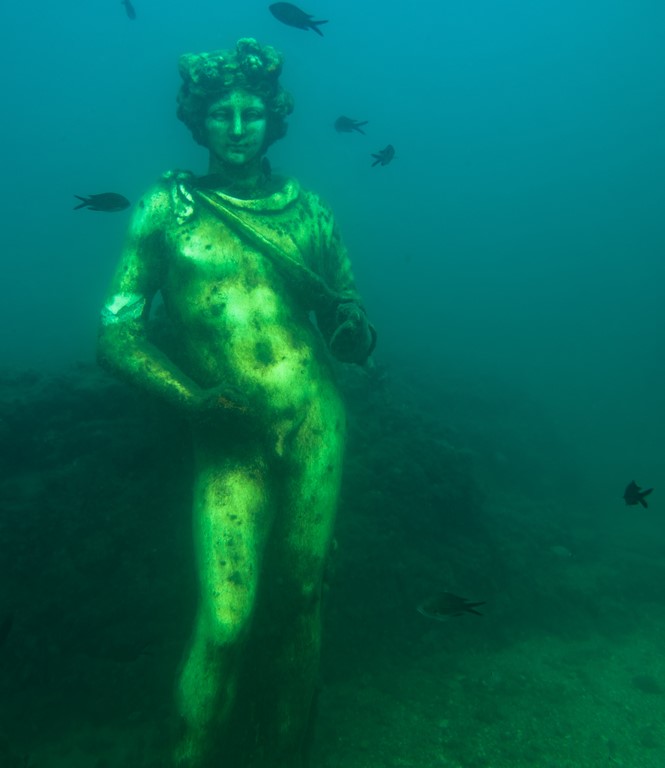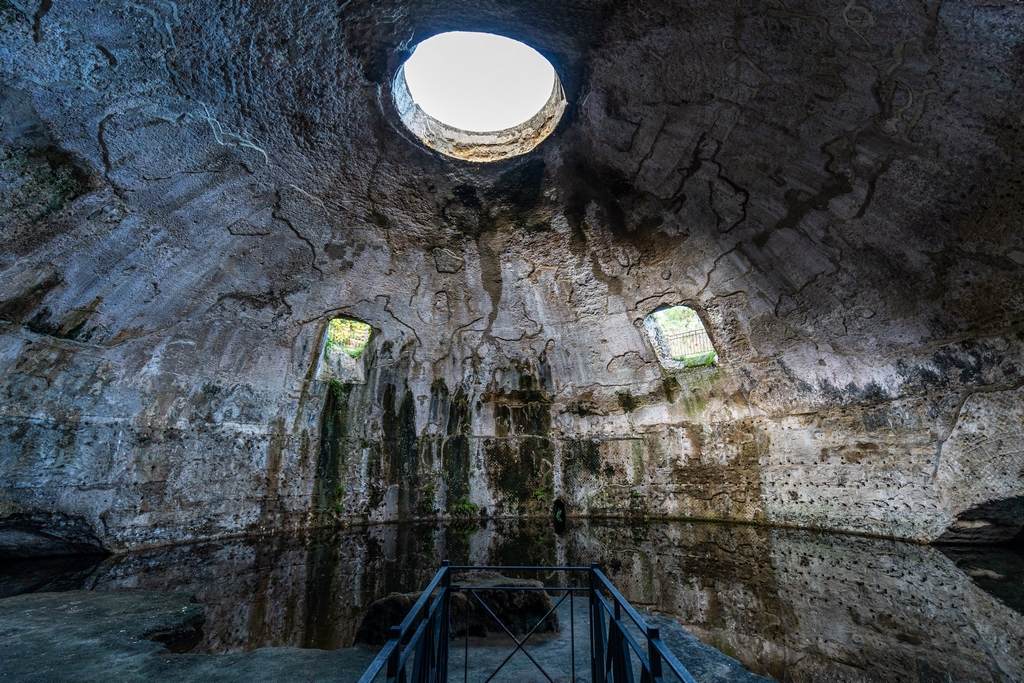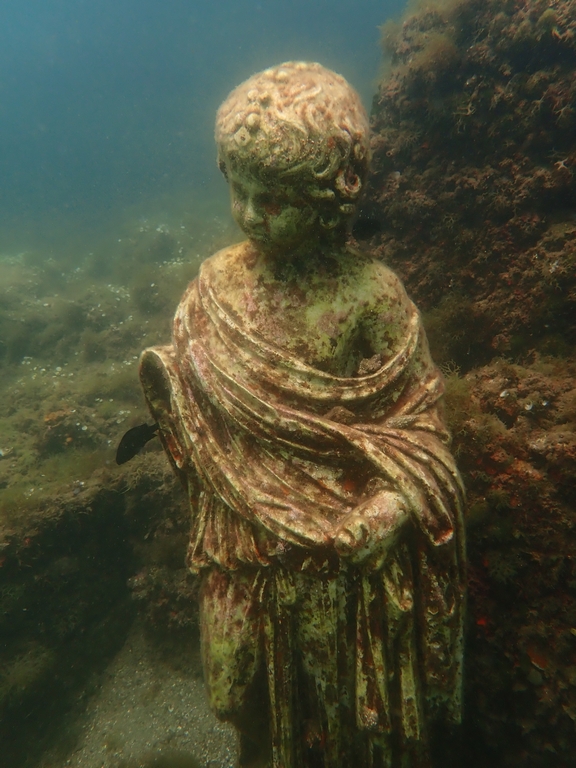Baiae: The Architecture of Pleasure


Baiae, an ancient Roman resort city located approximately 18 miles (30 kilometers) from Naples, has often been likened to a Roman Sodom, infamous for its hedonistic lifestyle and extravagant indulgences. Renowned as the ancient world’s Las Vegas, Baiae was a hub of luxury and excess, drawing Rome’s elite to its shores for beach parties, banquets, and debauchery.
By Eric Herman
Now mostly hidden beneath the sea, Baiae’s reputation as a center of vice is well-documented by historical sources. The city’s allure grew from in its ability to cater to the whims of the wealthy, providing a playground where moral boundaries were often blurred. Wine flowed freely, and entertainment ranged from lavish feasts to more licentious activities.
Moralists like Seneca were appalled by the city’s decadence, denouncing its refined yet morally bankrupt lifestyle. Seneca’s contemporary, Cicero, referred to Baiae as “Rome in miniature,” capturing the essence of the city’s indulgence and vice.
TECHNICAL ECSTASY
Beyond its reputation for moral decay, or freedom, depending how you look at it, Baiae was also a marvel of Roman engineering and architecture. The city was home to luxurious villas, thermal baths, and grand temples. The therapeutic hot springs were a major draw for many prominent Roman figures, including emperors Nero, Caligula, and Julius Caesar, who built opulent villas to enjoy Baiae’s natural and architectural beauty.
The city was adorned with temples dedicated to Mercury, Venus, and Diana, showcasing the religious devotion intertwined with the city’s pleasure-seeking culture. These structures, alongside other grandiose buildings, reflected the wealth and power of those who frequented Baiae, yet they also symbolized the moral decay that critics like Seneca despised.
Today, much of Baiae lies submerged beneath the shallow waters of the Bay of Naples, the result of volcanic activity that caused the land to sink. The ruins, preserved underwater, have become an archaeological treasure, attracting visitors who can explore the ancient city’s remnants through glass-bottom boats, snorkeling, or diving.
The underwater archaeological park offers a unique glimpse into the luxurious lifestyle of ancient Rome’s elite and serves as a poignant reminder of the city’s rise and fall.
A CITY OF CONTRASTS
Baiae’s legacy is one of contrasts—a city of great architectural and cultural achievements, yet also a symbol of excess and moral decline. While some, like Cicero, viewed Baiae as a microcosm of Rome, encapsulating the grandeur and vice of the empire, others, like Seneca, saw it as a cautionary tale of the dangers of unchecked indulgence.
Ultimately, whether Baiae was the Roman Sodom is a matter of perspective. For some, it was a paradise of pleasure, a retreat from the rigors of Roman life. For others, it was a place of corruption, where the moral decay of Rome was laid bare for all to see. Regardless of how one views it, Baiae remains a fascinating chapter in the history of the Roman Empire, a city where the heights of luxury and the depths of vice existed side by side.
Visiting Baiae today offers a fascinating journey into a world that once epitomized the height of Roman luxury, excess, and architectural grandeur. While much of the city now lies submerged beneath the Bay of Naples, Baiae’s cultural significance and the ongoing efforts to preserve and study it continue to captivate historians, archaeologists, and visitors alike.
CULTURAL CONFLUENCE
Baiae was more than just a retreat for the wealthy; it was a microcosm of Roman society, reflecting both its opulence and moral complexities. The city was famous for its grand villas, luxurious baths, and magnificent temples dedicated to gods like Mercury, Venus, and Diana. These structures were not merely places of worship or relaxation but symbols of the power and status of their owners.
The city’s hot springs were believed to have therapeutic properties, attracting figures such as Julius Caesar, Nero, and Caligula. The waters, combined with the mild climate and stunning views, made Baiae the ultimate destination for relaxation and socializing among the Roman elite. However, the city’s reputation for debauchery also earned it a place in the moral discourse of the time, with philosophers like Seneca condemning its excesses.
Baiae’s cultural significance also extends to its role in Roman politics and history. It was here that many critical decisions were made, and alliances were formed, shaping the course of the Roman Empire. The city’s allure and strategic location made it a gathering place for the most powerful individuals of the time, further cementing its place in history.
STUDY & PRESERVATION
The preservation and study of Baiae have become essential for understanding the broader context of Roman history and culture. While the submerged setting site presents unique challenges and opportunities for archaeologists, it also offers a unique opportunity for tourists seeking adventure.
One of the most significant efforts to preserve and study Baiae is the establishment of the Underwater Archaeological Park of Baiae. This remarkable park allows visitors to explore the submerged ruins through glass-bottom boats, snorkeling, or diving. The underwater environment has helped preserve mosaics, statues, and other artifacts that offer a glimpse into the city’s past. The park is one of the few places in the world where visitors can experience an underwater city, making it a unique cultural and educational destination.
Archaeologists continue to explore both the submerged and land-based ruins of Baiae. Advances in technology, such as underwater robotics and 3D mapping, have allowed researchers to study the city’s layout and uncover previously hidden structures. These efforts have led to new discoveries about the daily lives of Baiae’s inhabitants, the construction techniques used in its buildings, and the city’s role in the broader Roman world.
Research at Baiae also contributes to our understanding of Roman engineering and urban planning. The city’s complex system of baths, villas, and temples showcases the sophistication of Roman architecture and the importance of water in Roman society, both for its practical uses and its symbolic significance.
ONGOING ALLURE
As interest in Baiae grows, so too does the need for continued preservation efforts. The site faces challenges from natural factors like erosion and rising sea levels, as well as human activities such as tourism and encroaching development. Balancing the preservation of this historical site with the demands of modern visitors requires careful planning and sustainable practices.
International collaborations between Italian authorities, archaeologists, and conservationists are crucial to ensuring that Baiae remains accessible for future generations while protecting its invaluable cultural heritage. Educational programs and public outreach also play a key role in raising awareness about the importance of Baiae and the need to preserve it.
Opening photo by Carismarkus.ch | Shutterstock, second photo by Francesco Bonino | Shutterstock, third photo by Holly Lewis | Shutterstock.











